Have you ever heard of the name “barramundi”?
It is actually a popular fish in Australia and Asia, and is gradually becoming more common in Japanese supermarkets and restaurants.
This site provides easy-to-understand information on how to eat barramundi and recipes for it.
TasteTune introduces various cuisines from around the world and provides music that matches those cuisines. It is available on YouTube and various subscription services such as Spotify, so please give it a listen.
Barramundi dishes
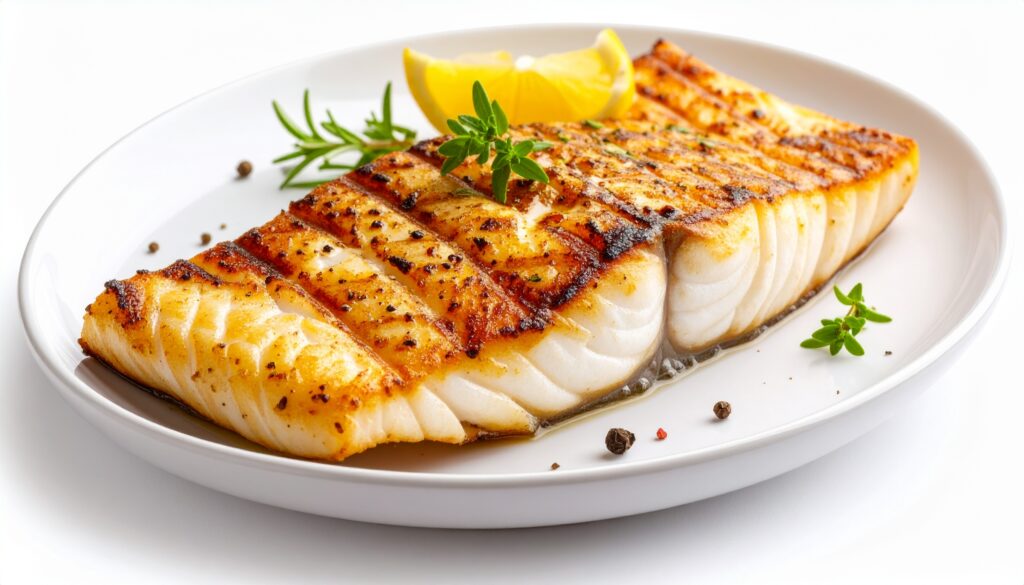
Barramundi is a large carnivorous fish that inhabits the tropical regions of the Indo-Pacific.
This fish, which is also sold as an ornamental fish, is called “akame” in Japan.
This fish, which is said to reach a total length of 2 meters and a weight of 60 kilograms when fully grown, is a white fish.
It is fatty yet mild and has little flavor, making it ideal for grilled dishes.
It is mainly popular in Australia and Southeast Asia.
TasteTune「Barramundi」
Hey everyone, have you heard Tastetune's song “Barramundi”?
This music is inspired by the barramundi, expressing through sound the fresh and uplifting atmosphere woven by the sea breeze and crystal-clear waters. With bright acoustic guitar, gentle piano, light flute, and delicate percussion, it creates a sonic world that invites listeners to the seaside, conveying the grace and blessings of the ocean embodied by the barramundi. Please give it a listen!
Below, we introduce the thoughts, expressions, and creative approaches embodied in this musical work.
Painting the Scenery of the Sea Through Sound: Refreshing and Clear Resonance
This piece captures, in sound, the crystal-clear ocean where barramundi swim.
The lively strumming of the acoustic guitar reflects sunlight shimmering on the water’s surface, while the gentle piano melody evokes the calm sway of the waves. The fresh tones of the flute and the delicate touch of percussion convey the pleasant caress of the sea breeze, allowing listeners to feel the vastness and refreshing clarity of the ocean.
Pure and Gentle Vitality: The Mood of the Music
This music conveys a sense of purity, tranquility, and vitality.
It is like standing by the seaside, feeling the cool breeze while your heart grows calm.
The piece expresses both the freshness of the ocean and the elegance of the barramundi through sound, guiding listeners into deep relaxation and a sense of unity with nature.
There is no showiness here—only a quiet resonance of essential beauty and the power of life.
Experiencing Barramundi Through Sound
This barramundi-inspired music is more than just background sound—it is an experience that lets you savor the purity of the sea and the fish through your ears. Through the music, you can feel freshness, the clarity of the ocean air, and the blessings of Australia’s natural environment. Immerse yourself in the sound, and you will be embraced by a sense of happiness, as if touching the world of the barramundi itself.
The History of Barramundi
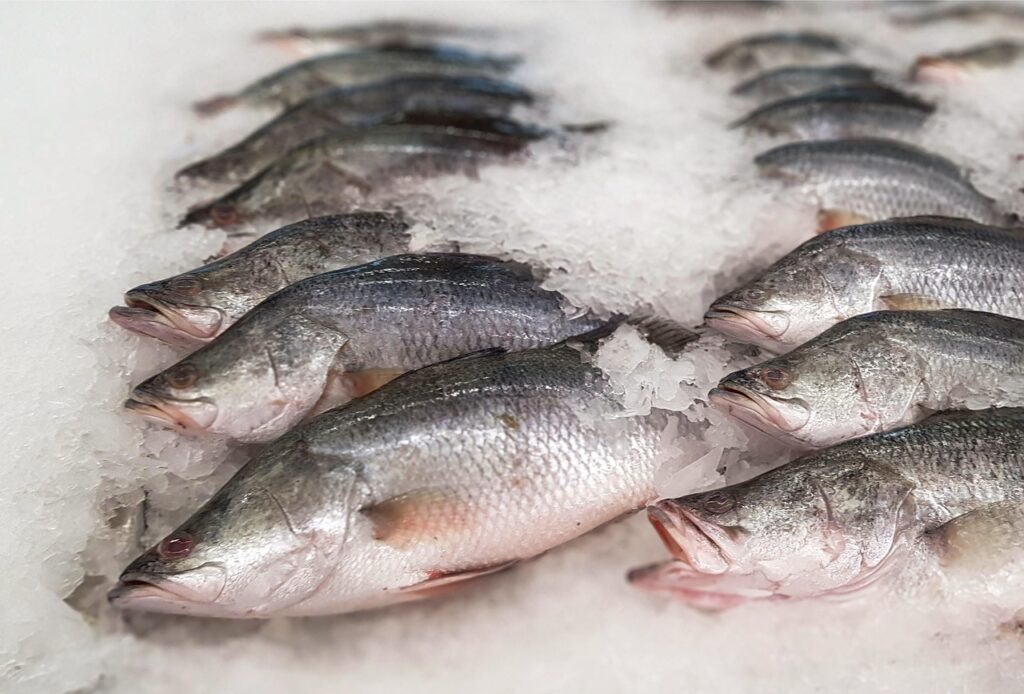
The spread of barramundi as an edible fish is related to its natural distribution, traditional food culture, and the development of aquaculture technology.
It began thousands of years ago. The Aboriginal people of Australia hunted and fished for food.
Barramundi was such an integral part of daily life that it even appeared in Aboriginal rock art and folklore.
In the 19th century, barramundi attracted attention among European settlers in Australia.
With its white flesh and mild flavor, it is popular as a high-quality fish alternative to sea bass and sea bream, offering a wide range of cooking possibilities.
It is often used in dishes such as grilled foods, fried foods, and curry, and has become widely used in everything from home cooking to restaurants.
In the 1970s, aquaculture began in Thailand, other parts of Southeast Asia, and Australia.
Barramundi are highly adaptable and grow quickly, making them ideal for aquaculture.
In Australia, aquaculture has been actively promoted since the 1980s.
In the 2000s, many aquaculture farms grew to produce thousands of tons annually.
In 2004, Australis Aquaculture was established in the United States, and barramundi became popular in North America.
Currently, it is highly regarded in the international market as an environmentally friendly farmed fish.
Barramundi recipes
Barramundi is a white fish with a mild flavor, so it can be used in a wide variety of Japanese, Western, and ethnic dishes.
This section introduces representative dishes from our repertoire, categorized by genre.
Simple Cooking
Grilled (with lemon and herbs)
The skin is crisp and fragrant, while the inside is plump and juicy. The refreshing lemon and herbal aroma complement the mild flavor of the barramundi.
Oven-baked (olive oil & white wine)
The moist texture is complemented by the richness of olive oil and the subtle acidity of white wine, creating an elegant European-style flavor.
Butter sauté
The aroma and richness of butter envelops the soft sweetness of the fish, creating a rich flavor reminiscent of Western cuisine.
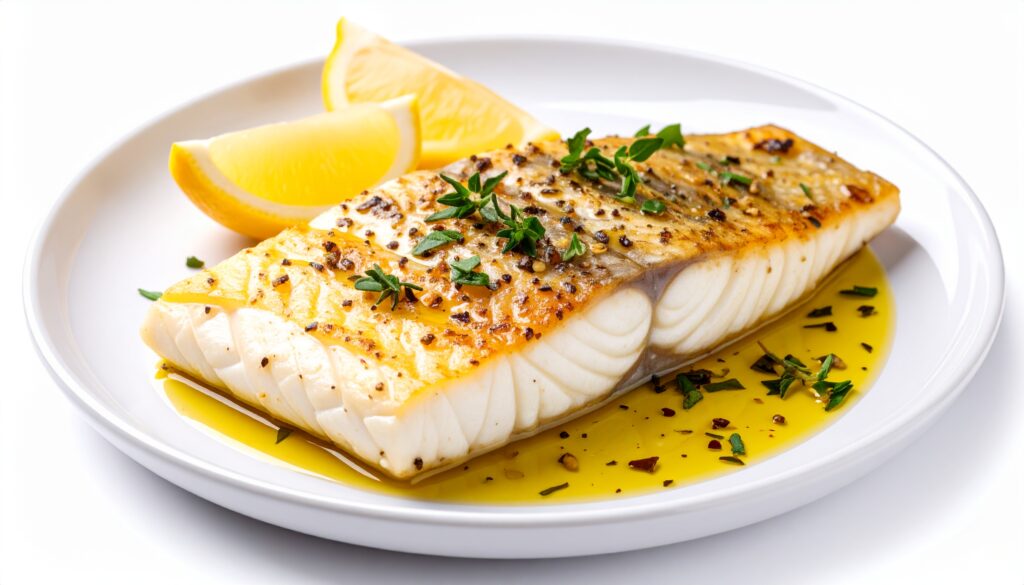
Stewed and steamed dishes
Thai-style curry (green/red)
The smoothness of coconut milk and the kick of spices add depth to the mild flavor of balamandi. It also pairs well with rice, like a soup.
Chinese-style steamed fish (ginger and green onion oil)
The refreshing spiciness of ginger and the aroma of green onion oil bring out the umami flavor of the fish, and the fluffy steamed flesh spreads lightly in your mouth.
Tomato stew (Mediterranean style)
The tangy sweetness of tomatoes combined with the saltiness of olives and capers creates a rich, layered flavor reminiscent of the Mediterranean. It also pairs exceptionally well with bread and wine.
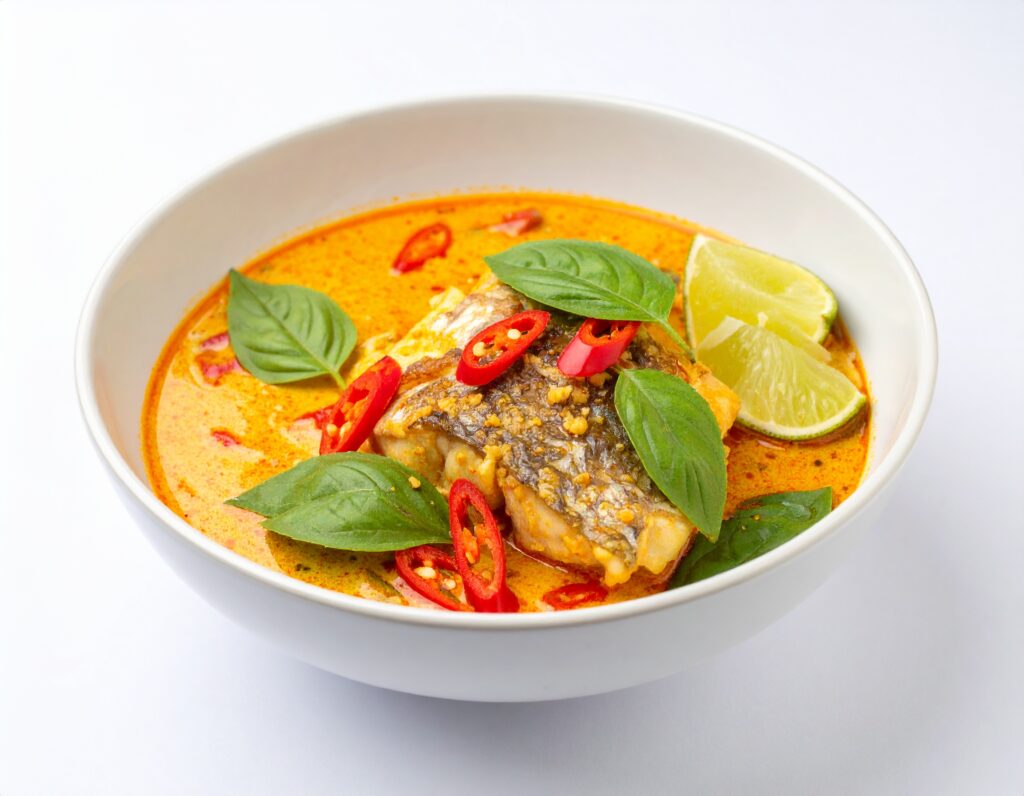
Deep-fried food
Fish and chips
The coating is crispy, while the inside is fluffy. Barramundi also absorbs less oil, resulting in a lighter texture than cod, making it more refined and very easy to eat.
Fried chicken (garlic soy sauce flavor)
Crispy and fragrant on the outside, juicy on the inside. With a rich flavor from garlic and soy sauce marinade, it's perfect as a side dish with rice or as a snack with drinks.

Salad/Light meal
Ceviche (lime marinade)
The lime's tartness firms up the texture, creating a refreshing and clean taste. Adding cilantro or chili peppers also boosts the ethnic flavor.
Fish tacos
The aromatic aroma of grilled barramundi is enhanced by the sourness of salsa and the spiciness of spices, creating a refreshing and punchy flavor.
Cold fish salad (olives & lemon)
The tender meat is combined with the mellow flavor of olive oil and the sourness of lemon to create a light and healthy taste.
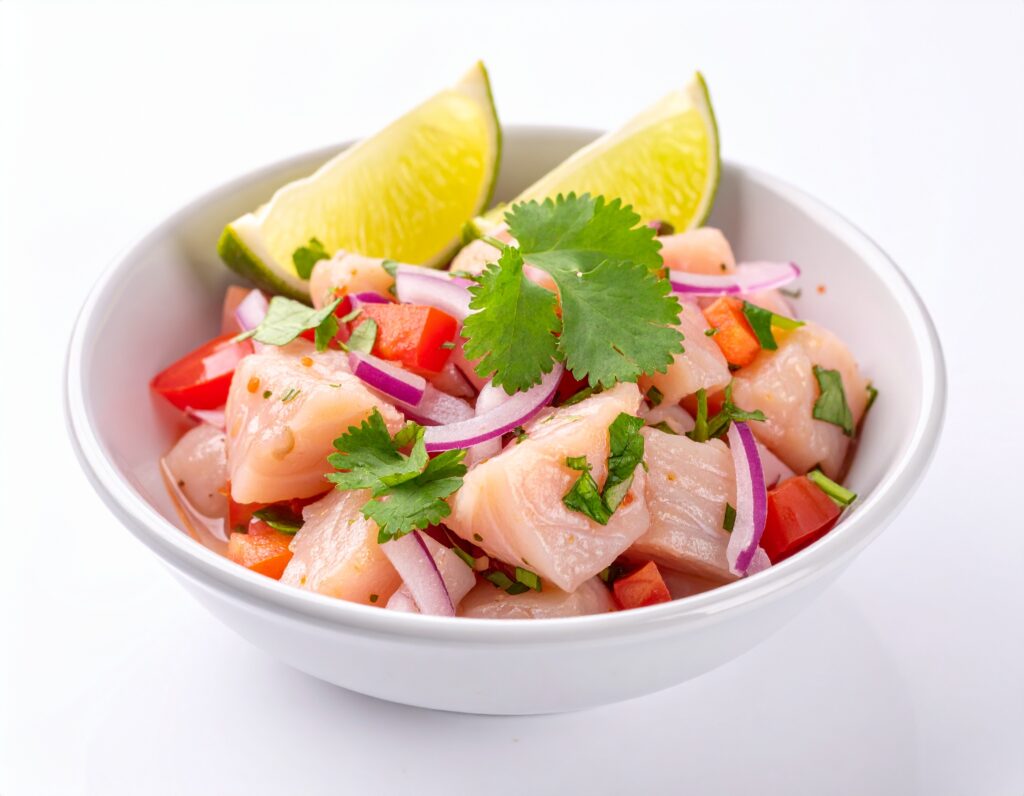
Japanese-style arrangement
Teriyaki
The sweet and savory sauce of soy sauce and mirin clings to the tender, moist meat, creating a flavor that pairs perfectly with rice. It's also ideal for those who enjoy teriyaki chicken or mackerel.
Grilled miso-marinated fish
The richness and aroma of miso add a mellow and deep Japanese flavor. Similar to Saikyo-yaki.
Simmered dish
Simmering in soy sauce, sugar, and mirin creates a sweet and savory flavor. The flesh becomes plump, creating a comforting, home-style taste.
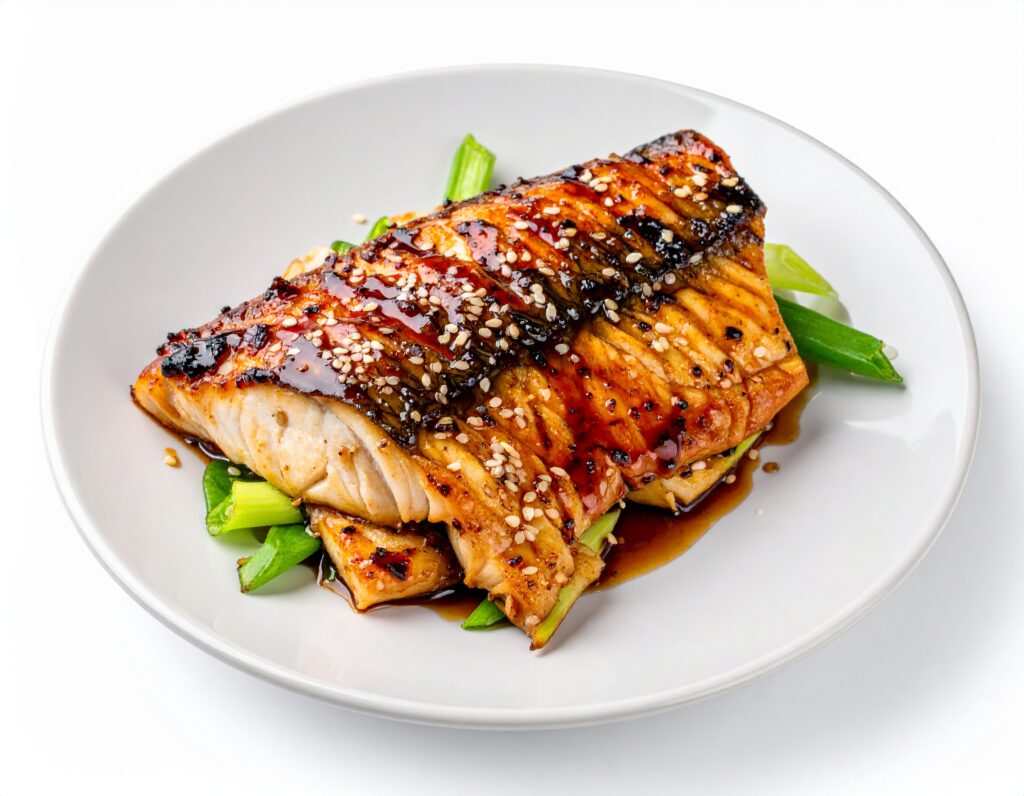
Points
Barramundi has a texture and flavor similar to sea bass.
Therefore, it can be substituted in most Suzuki recipes for enjoyment.
How to Grill Barramundi
Ingredients (for 2 people)
- Barramundi fillets … 2 pieces
- Olive oil ... 2 tablespoons
- Lemon ... 1 (half sliced, half squeezed)
- Dill and Italian parsley ... appropriate amount
- Garlic (minced) ... 1 clove
- Salt ... 1/2 teaspoon
- Black pepper ... a pinch
Preparation
Remove moisture from fish
- Lightly press the barramundi fillets with kitchen paper to remove moisture.
- This will make the skin crispy when baked.
Season
- Sprinkle lightly with salt on both sides and leave for about 10 minutes (excess moisture will be released).
- Wipe off any moisture again with paper towels, then sprinkle with olive oil, garlic, and black pepper.
How to cook (using a grill pan or frying pan)
- First, heat a frying pan over medium heat and lightly coat it with olive oil.
- Next, place the fish skin-side down in the pan. Press it down lightly with a spatula to flatten it, then cook until the skin is crispy.
- Approximate cooking time: 4-5 minutes for the skin side, 3-4 minutes for the flesh side.
- Turn it over, place lemon slices and herbs on top, cover, and steam bake.
- If you stick a bamboo skewer into it and clear juice comes out, it means it is cooked through.
Finishing
Finally, plate the dish, finish by squeezing lemon juice over it, and sprinkle with chopped herbs.
A dash of olive oil will enhance the aroma and luster.
Side dish to go with
- Grilled vegetables (zucchini, bell peppers, eggplant, etc.)
- Garlic rice and couscous
- Simple salad
Points
In Japan, you can use Suzuki or Tai as substitutes, so if they are hard to find, we recommend using similar fish.
Summary
Barramundi is now popular around the world due to its ecology and taste.
There is a wide variety of dishes available, and there are many ways to bring out the best flavors.
I like white fish, so I would like to try the grilled fish I introduced this time, as well as fried fish.
I would be delighted if anyone reading this article became even slightly interested in barramundi cuisine.
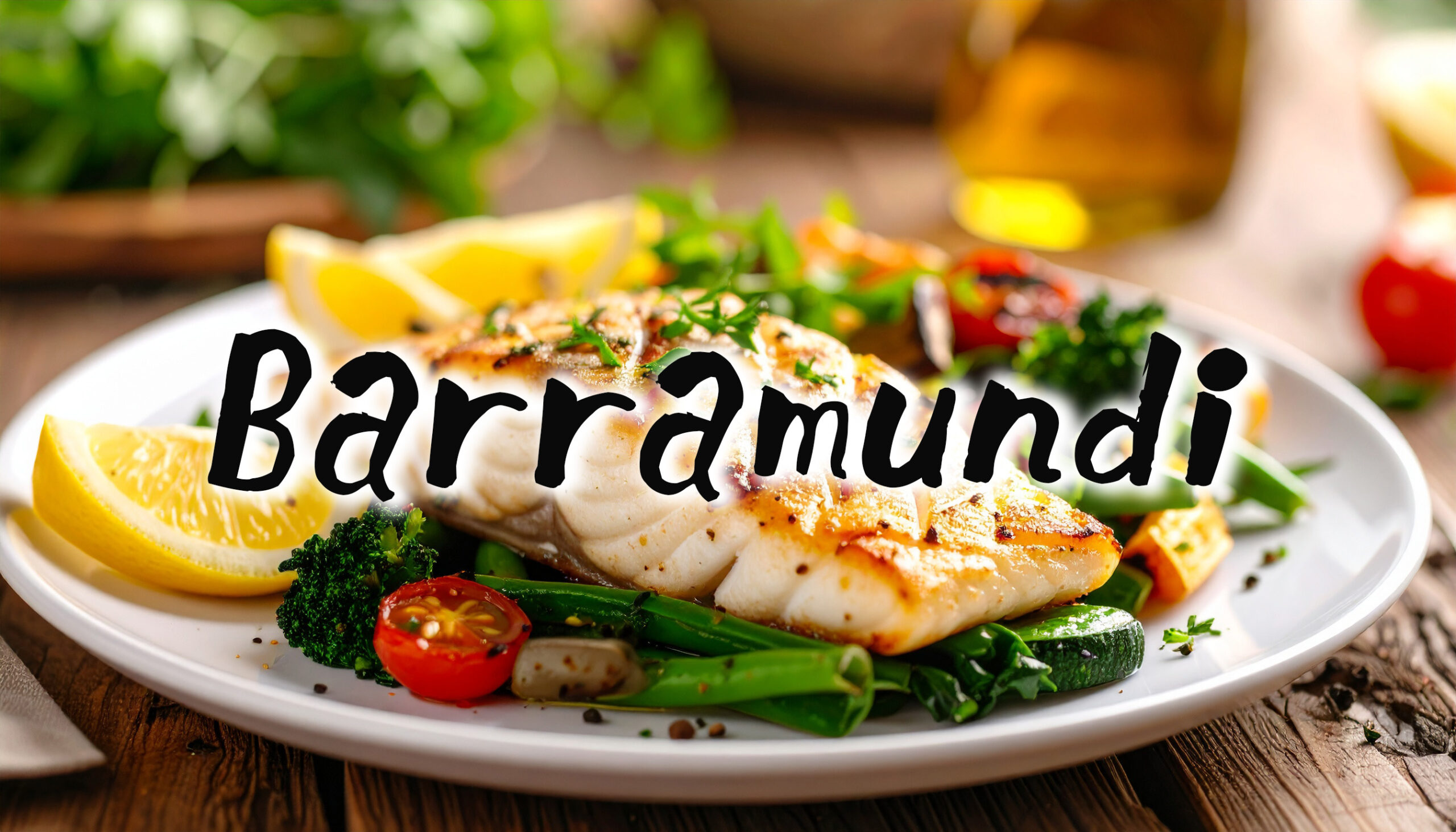




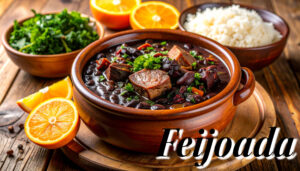




Comments